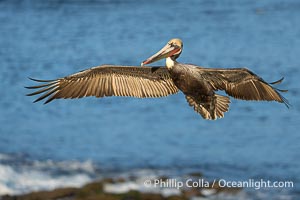
Brown pelican in flight. Adult winter breeding plumage. Brown pelicans were formerly an endangered species. In 1972, the United States Environmental Protection Agency banned the use of DDT in part to protect bird species like the brown pelican . Since that time, populations of pelicans have recovered and expanded. The recovery has been so successful that brown pelicans were taken off the endangered species list in 2009.
Species: Brown Pelican, Pelecanus occidentalis, Pelecanus occidentalis californicus
Location: La Jolla, California
Image ID: 40009
Species: Brown Pelican, Pelecanus occidentalis, Pelecanus occidentalis californicus
Location: La Jolla, California
Image ID: 40009
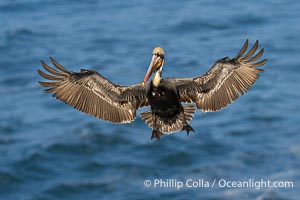
Brown pelican in flight. Adult winter breeding plumage. Brown pelicans were formerly an endangered species. In 1972, the United States Environmental Protection Agency banned the use of DDT in part to protect bird species like the brown pelican . Since that time, populations of pelicans have recovered and expanded. The recovery has been so successful that brown pelicans were taken off the endangered species list in 2009.
Species: Brown Pelican, Pelecanus occidentalis, Pelecanus occidentalis californicus
Location: La Jolla, California
Image ID: 40010
Species: Brown Pelican, Pelecanus occidentalis, Pelecanus occidentalis californicus
Location: La Jolla, California
Image ID: 40010
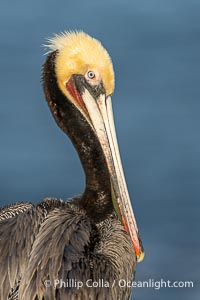
Portrait of a California brown pelican in winter breeding plumage, yellow head, red throat, pink skin around the eye, brown hind neck. Brown pelicans were formerly an endangered species. In 1972, the United States Environmental Protection Agency banned the use of DDT. Since that time, populations of pelicans have recovered and expanded. The recovery has been so successful that brown pelicans were taken off the endangered species list in 2009.
Species: Brown Pelican, Pelecanus occidentalis, Pelecanus occidentalis californicus
Location: La Jolla, California
Image ID: 40017
Species: Brown Pelican, Pelecanus occidentalis, Pelecanus occidentalis californicus
Location: La Jolla, California
Image ID: 40017
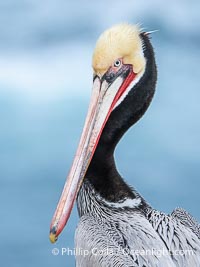
Portrait of a California brown pelican in winter breeding plumage, yellow head, red throat, pink skin around the eye, brown hind neck. Brown pelicans were formerly an endangered species. In 1972, the United States Environmental Protection Agency banned the use of DDT. Since that time, populations of pelicans have recovered and expanded. The recovery has been so successful that brown pelicans were taken off the endangered species list in 2009.
Species: Brown Pelican, Pelecanus occidentalis, Pelecanus occidentalis californicus
Location: La Jolla, California
Image ID: 40018
Species: Brown Pelican, Pelecanus occidentalis, Pelecanus occidentalis californicus
Location: La Jolla, California
Image ID: 40018
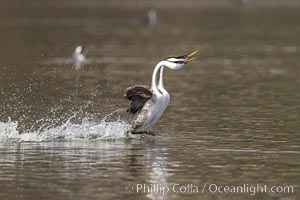
Western Grebes rushing in a courtship display. Rushiing grebes run across the water 60 feet (20m) or further with their feet hitting the water as rapidly as 20 times per second. Lake Hodges, San Diego.
Species: Western grebe, Aechmophorus occidentalis
Image ID: 36890
Species: Western grebe, Aechmophorus occidentalis
Image ID: 36890

Full Moon Setting Over SIO Pier in the moments just before sunrise, Scripps Institution of Oceanography.
Location: Scripps Institution of Oceanography, La Jolla, California
Image ID: 37507
Location: Scripps Institution of Oceanography, La Jolla, California
Image ID: 37507
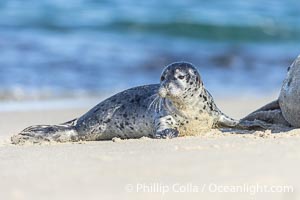
Pacific Harbor Seal Pup About Two Weeks Old, hauled out on a white sand beach along the coast of San Diego. This young seal will be weaned off its mothers milk and care when it is about four to six weeks old, and before that time it must learn how to forage for food on its own, a very difficult time for a young seal.
Species: Pacific harbor seal, Phoca vitulina richardsi
Location: La Jolla, California
Image ID: 39072
Species: Pacific harbor seal, Phoca vitulina richardsi
Location: La Jolla, California
Image ID: 39072
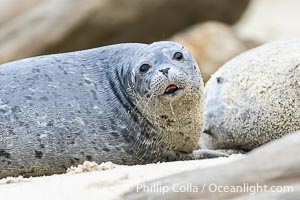
A young Pacific Harbor Seal pup nursing. Mother harbor seals will only nurse their pups for about four to six weeks, at which point the small seal is weaned and must begin to forage and fend for itself. That short period of time is crucial for the young seal to learn how to hunt, socialize and swim.
Species: Pacific harbor seal, Phoca vitulina richardsi
Location: La Jolla, California
Image ID: 39081
Species: Pacific harbor seal, Phoca vitulina richardsi
Location: La Jolla, California
Image ID: 39081

Pacific Harbor Seal Pup About Two Weeks Old, hauled out on a white sand beach along the coast of San Diego. This young seal will be weaned off its mothers milk and care when it is about four to six weeks old, and before that time it must learn how to forage for food on its own, a very difficult time for a young seal.
Species: Pacific harbor seal, Phoca vitulina richardsi
Location: La Jolla, California
Image ID: 39084
Species: Pacific harbor seal, Phoca vitulina richardsi
Location: La Jolla, California
Image ID: 39084

Pacific Harbor Seal Pup About Two Weeks Old, hauled out on a white sand beach along the coast of San Diego. This young seal will be weaned off its mothers milk and care when it is about four to six weeks old, and before that time it must learn how to forage for food on its own, a very difficult time for a young seal.
Species: Pacific harbor seal, Phoca vitulina richardsi
Location: La Jolla, California
Image ID: 39085
Species: Pacific harbor seal, Phoca vitulina richardsi
Location: La Jolla, California
Image ID: 39085
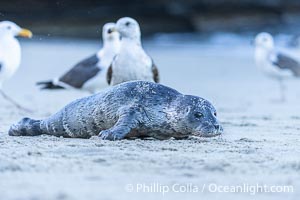
Newborn Harbor Seal Pup and Seagulls on Sand Beach. Seagulls sometimes pester young seal pups. The pup must stay close to its mother to receive protection, otherwise the young seal may be overwhelmed by a pack of gulls.
Species: Pacific harbor seal, Phoca vitulina richardsi
Location: La Jolla, California
Image ID: 39109
Species: Pacific harbor seal, Phoca vitulina richardsi
Location: La Jolla, California
Image ID: 39109
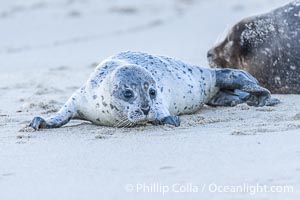
Pacific Harbor Seal Pup About Two Weeks Old, hauled out on a white sand beach along the coast of San Diego. This young seal will be weaned off its mothers milk and care when it is about four to six weeks old, and before that time it must learn how to forage for food on its own, a very difficult time for a young seal.
Species: Pacific harbor seal, Phoca vitulina richardsi
Location: La Jolla, California
Image ID: 39115
Species: Pacific harbor seal, Phoca vitulina richardsi
Location: La Jolla, California
Image ID: 39115

Cormorant in flight, wings blurred by time exposure.
Species: Double-crested cormorant, Phalacrocorax auritus
Location: La Jolla, California
Image ID: 30219
Species: Double-crested cormorant, Phalacrocorax auritus
Location: La Jolla, California
Image ID: 30219
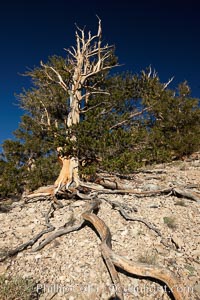
Ancient bristlecone pine tree, roots spread wide and exposed over dolomite-rich soil, rising above the arid slopes of the Schulman Grove in the White Mountains at an elevation of 9500 above sea level, along the Methuselah Walk. The oldest bristlecone pines in the world are found in the Schulman Grove, some of them over 4700 years old. Ancient Bristlecone Pine Forest.
Species: Bristlecone pine, Pinus longaeva
Location: White Mountains, Inyo National Forest, California
Image ID: 23234
Species: Bristlecone pine, Pinus longaeva
Location: White Mountains, Inyo National Forest, California
Image ID: 23234
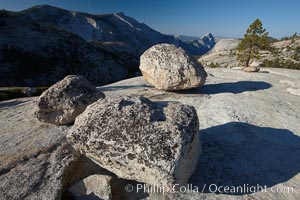
Glacial erratic boulders atop Olmsted Point, with the massive granite monoliths Half Dome and Clouds Rest in the background. Erratics are huge boulders left behind by the passing of glaciers which carved the granite surroundings into their present-day form. When the glaciers melt, any boulders and other geologic material that it was carrying are left in place, sometimes many miles from their original location.
Location: Yosemite National Park, California
Image ID: 23264
Location: Yosemite National Park, California
Image ID: 23264
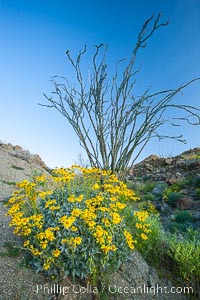
Brittlebush, ocotillo and various cacti and wildflowers color the sides of Glorietta Canyon. Heavy winter rains led to a historic springtime bloom in 2005, carpeting the entire desert in vegetation and color for months.
Species: Brittlebush, Encelia farinosa, Fouquieria splendens
Location: Anza-Borrego Desert State Park, Borrego Springs, California
Image ID: 10896
Species: Brittlebush, Encelia farinosa, Fouquieria splendens
Location: Anza-Borrego Desert State Park, Borrego Springs, California
Image ID: 10896
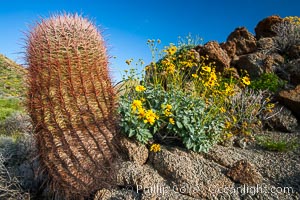
Barrel cactus, brittlebush and wildflowers color the sides of Glorietta Canyon. Heavy winter rains led to a historic springtime bloom in 2005, carpeting the entire desert in vegetation and color for months.
Species: Red barrel cactus, Encelia farinosa, Ferocactus cylindraceus
Location: Anza-Borrego Desert State Park, Borrego Springs, California
Image ID: 10899
Species: Red barrel cactus, Encelia farinosa, Ferocactus cylindraceus
Location: Anza-Borrego Desert State Park, Borrego Springs, California
Image ID: 10899
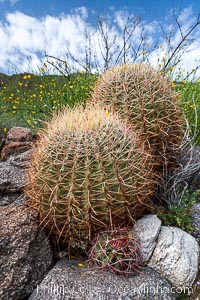
Barrel cactus, Glorietta Canyon. Heavy winter rains led to a historic springtime bloom in 2005, carpeting the entire desert in vegetation and color for months.
Species: Red barrel cactus, Ferocactus cylindraceus
Location: Anza-Borrego Desert State Park, Borrego Springs, California
Image ID: 10906
Species: Red barrel cactus, Ferocactus cylindraceus
Location: Anza-Borrego Desert State Park, Borrego Springs, California
Image ID: 10906
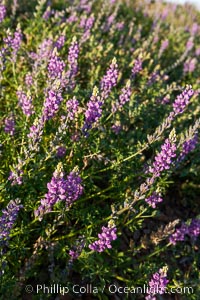
Lupine color the sides of the Borrego Valley in spring. Heavy winter rains led to a historic springtime bloom in 2005, carpeting the entire desert in vegetation and color for months.
Species: Arizona lupine, Lupinus arizonicus
Location: Anza-Borrego Desert State Park, Borrego Springs, California
Image ID: 10969
Species: Arizona lupine, Lupinus arizonicus
Location: Anza-Borrego Desert State Park, Borrego Springs, California
Image ID: 10969
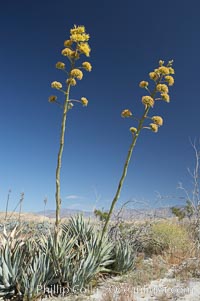
Desert agave, also known as the Century Plant, blooms in spring in Anza-Borrego Desert State Park. Desert agave is the only agave species to be found on the rocky slopes and flats bordering the Coachella Valley. It occurs over a wide range of elevations from 500 to over 4,000. It is called century plant in reference to the amount of time it takes it to bloom. This can be anywhere from 5 to 20 years. They send up towering flower stalks that can approach 15 feet in height. Sending up this tremendous display attracts a variety of pollinators including bats, hummingbirds, bees, moths and other insects and nectar-eating birds.
Species: Desert agave, Agave deserti
Image ID: 11550
Species: Desert agave, Agave deserti
Image ID: 11550
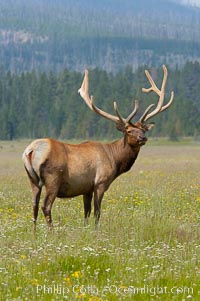
Bull elk, antlers bearing velvet, Gibbon Meadow. Elk are the most abundant large mammal found in Yellowstone National Park. More than 30,000 elk from 8 different herds summer in Yellowstone and approximately 15,000 to 22,000 winter in the park. Bulls grow antlers annually from the time they are nearly one year old. When mature, a bulls rack may have 6 to 8 points or tines on each side and weigh more than 30 pounds. The antlers are shed in March or April and begin regrowing in May, when the bony growth is nourished by blood vessels and covered by furry-looking velvet.
Species: Elk, Cervus canadensis
Location: Gibbon Meadows, Yellowstone National Park, Wyoming
Image ID: 13154
Species: Elk, Cervus canadensis
Location: Gibbon Meadows, Yellowstone National Park, Wyoming
Image ID: 13154
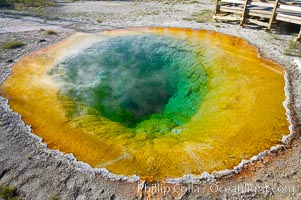
Morning Glory Pool has long been considered a must-see site in Yellowstone. At one time a road brought visitors to its brink. Over the years they threw coins, bottles and trash in the pool, reducing its flow and causing the red and orange bacteria to creep in from its edge, replacing the blue bacteria that thrive in the hotter water at the center of the pool. The pool is now accessed only by a foot path. Upper Geyser Basin.
Location: Upper Geyser Basin, Yellowstone National Park, Wyoming
Image ID: 13352
Location: Upper Geyser Basin, Yellowstone National Park, Wyoming
Image ID: 13352
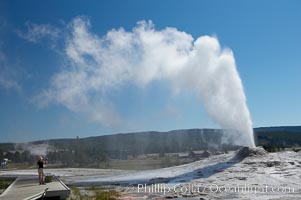
A visitor videotapes the eruption of Lion Geyser, with Old Faithful Inn visible in the distance. Lion Geyser, whose eruption is preceded by a release of steam that sounds like a lion roaring, erupts just once or a few times each day, reaching heights of up to 90 feet. Upper Geyser Basin.
Location: Upper Geyser Basin, Yellowstone National Park, Wyoming
Image ID: 13371
Location: Upper Geyser Basin, Yellowstone National Park, Wyoming
Image ID: 13371
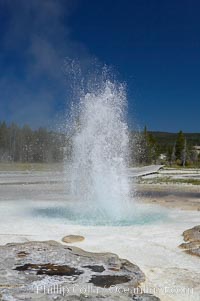
Sawmill Geyser erupting. Sawmill Geyser is a fountain-type geyser and, in some circumstances, can be erupting about one-third of the time up to heights of 35 feet. Upper Geyser Basin.
Location: Upper Geyser Basin, Yellowstone National Park, Wyoming
Image ID: 13385
Location: Upper Geyser Basin, Yellowstone National Park, Wyoming
Image ID: 13385

The Star of India is tied to her dock along the waterfront of San Diego harbor.
Location: San Diego, California
Image ID: 14530
Location: San Diego, California
Image ID: 14530
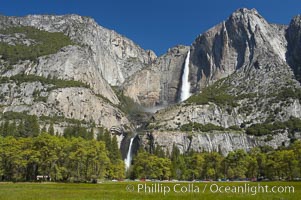
Yosemite Falls rises above Cooks Meadow. The 2425 falls, the tallest in North America, is at peak flow during a warm-weather springtime melt of Sierra snowpack. Yosemite Valley.
Location: Yosemite Falls, Yosemite National Park, California
Image ID: 16141
Location: Yosemite Falls, Yosemite National Park, California
Image ID: 16141
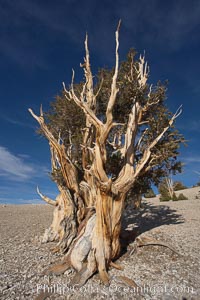
Bristlecone pine rising above the arid, dolomite-rich slopes of the White Mountains at 11000-foot elevation. Patriarch Grove, Ancient Bristlecone Pine Forest.
Species: Bristlecone pine, Pinus longaeva
Location: White Mountains, Inyo National Forest, California
Image ID: 17476
Species: Bristlecone pine, Pinus longaeva
Location: White Mountains, Inyo National Forest, California
Image ID: 17476
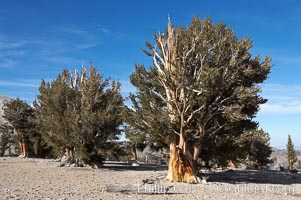
Bristlecone pines rising above the arid, dolomite-rich slopes of the White Mountains at 11000-foot elevation. Patriarch Grove, Ancient Bristlecone Pine Forest.
Species: Bristlecone pine, Pinus longaeva
Location: White Mountains, Inyo National Forest, California
Image ID: 17478
Species: Bristlecone pine, Pinus longaeva
Location: White Mountains, Inyo National Forest, California
Image ID: 17478
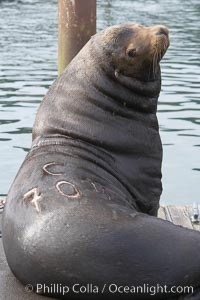
A bull sea lion shows a brand burned into its hide by the Oregon Department of Fish and Wildlife, to monitor it from season to season as it travels between California, Oregon and Washington. Some California sea lions, such as this one C-704, prey upon migrating salmon that gather in the downstream waters and fish ladders of Bonneville Dam on the Columbia River. The "C" in its brand denotes Columbia River. These sea lions also form bachelor colonies that haul out on public docks in Astoria's East Mooring Basin and elsewhere, where they can damage or even sink docks.
Species: California sea lion, Zalophus californianus
Location: Columbia River, Astoria, Oregon
Image ID: 19419
Species: California sea lion, Zalophus californianus
Location: Columbia River, Astoria, Oregon
Image ID: 19419
